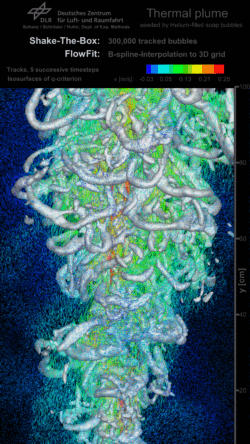Image based measurement techniques

Image based measurement methods are rapidly advancing in many technical and social areas and are therefore subject to a correspondingly rapid technical development. The continuous increase in spatial resolution and image quality of the current camera sensors (e.g. CMOS) and the constant increase in the image recording frequency, with the simultaneous acceleration and new development of digital image processing algorithms and the evaluation methods integrated into them, meanwhile contribute to a huge data stream, which can also be implemented within the framework with appropriately adapted techniques of (natural) scientific research or can be used in ever broader areas of application. In addition to selective and often intrusive probe measurement techniques, image based methods can currently expand their possibilities and areas of application in various engineering areas considerably, since the non-intrusive and optical recording of planar or even volumetric measurement variables not only means a significant acceleration of quantitative data collection for research, but also spatial structures and their dynamics can now be viewed in more detail. In order to make better use of the technical possibilities of imaging measurement methods in their own scientific field of application, basic insights into the entire measuring chain are required and, depending on the field of application, in-depth knowledge of the optics and electronics of cameras, lens systems, lasers, LEDs, synchronization and signal chains, as well as the optical and physical properties of the surfaces, materials and particles to be imaged, as well as the computer-controlled processing, evaluation and analysis of the image or measurement data. which can be optimized on the basis of a suitably calibrated camera models and specific imaging properties of the optical measuring system used.
In the field of imaging measurement methods in fluid mechanics, there have been some very successful developments over the past 30 years, which, in view of the rapid technical progress in the field of optoelectronics of cameras and light sources, seem to continue very fruitfully in the future, especially since technically relevant flows often have to be investigated at high Reynolds numbers, whose unsteady and three-dimensional (usually turbulent) character can currently not be quantified with sufficient accuracy either using complex numerical methods (eg LBM, LES, DNS) or using probe-based measurement techniques. For flows with high Reynolds numbers, it is generally the case that the scale-resolving, numerical simulation methods increasingly used in the aerospace, automotive and engine industries generate a growing need for experimental validation data in order to be able to adapt their prediction accuracy to the technical requirements and objectives of innovative design processes . Here, too, imaging measuring methods provide important fluid-mechanical parameters in whole areas or volumes of the flow under investigation, which previously could not be made available with reliable statistics in the required high spatial (and temporal) resolution.
One example for the application of the recently developed Shake-The-Box Lagrangian Particle Tracking technique is demonstrated here.
